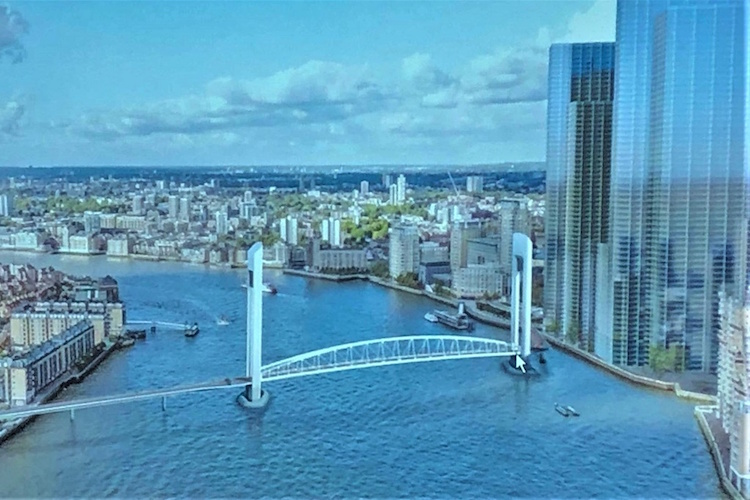Sadiq Khan’s flagship Rotherhithe to Canary Wharf bridge seems to have reached the end of the road, with deputy mayor for transport Heidi Alexander telling the London Assembly transport committee that finding the cash for the project was not realistic.
The bridge had been a centrepiece of mayoral plans to create more river crossings in East London – where there are currently five crossings between Tower Bridge and Dartford Tunnel compared to 15 to Wandsworth Bridge in the west.
But costs soared and Alexander told Assembly Members last week it was “difficult to envisage” Transport for London (TfL) being in a position to spend what might be £500 million on the bridge, either in the short or medium term.
She confirmed work on the project would now be halted and the bridge scheme “put on the shelf”, with the focus shifting to planning a new “fast and frequent” ferry service using electric or hybrid vessels. Details of the service including costings would be ready in October this year, she said, with a free service not ruled out.
The committee also heard that TfL’s independent investment programme advisory group of infrastructure experts (IIPAG), had flagged concerns about the project in early 2017. Details of these were provided to committee members just before the meeting, but have not been made public, a decision now being queried by committee officers.
Alexander and TfL major projects sponsorship chief David Rowe outlined major costings hikes since 2016. Early estimates went from £100 million to £150 million to £200 million, and when the bridge option was formally selected in 2017 the upper estimate had become £260 million.
In December 2018, with costings ranging from £355 million to £395 million, TfL allocated £350 million to the project in its 2019 business plan. But by spring this year mid-range cost estimates were up to £455 million, which became £463 million in May, with upper-range estimates approaching £600 million.
Despite efforts to get costs down, Alexander told the committee, “they were only ever going in one direction”. In June, the scheme was halted by a decision of TfL’s programmes and investment committee, announced by Alexander in a letter to Assembly transport committee chair Florence Eshalomi. “It was the responsible thing to do,” she said.
Contracts waiting to be signed for the detailed design work, bank and river bed surveys required to take the project forward would have cost TfL in the region of £1 million a month. “I couldn’t justify that when in the short and medium-term money would not be available to construct the bridge,” Alexander said. “This would have been a great project, a world first, but that could not be at any cost.”
Why had costs soared? The bridge was large and complex, with a span three times that of Tower Bridge, Alexander and Rowe said. Initial estimates had not been based on detailed exploration of the site, and work with the Port of London Authority on requirements to cope with wind, tides, opening width and height and protection from shipping had seen costs escalate.
And attempts to find other funding sources – from the boroughs, Canary Wharf Group, other businesses and even philanthropic sources – had been unsuccessful, leaving a funding gap of at least £100 million.
Members highlighted IIPAG concerns that TfL had wanted to get the bridge started before Khan’s term of office ended, leading to short cuts and failure to make “frank and honest” assessments of options and costs. “Red flags were coming up as early as March 2017,” said Eshalomi. But Alexander said the process, ending in axing the project, was, in fact, an example of “good governance – the exact opposite of examples like the Garden Bridge.”
OnLondon.co.uk is dedicated to providing fair and thorough coverage of London’s politics, development and culture. The site depends on donations from readers and is also seeking support from suitable organisations. Read more about that here.

